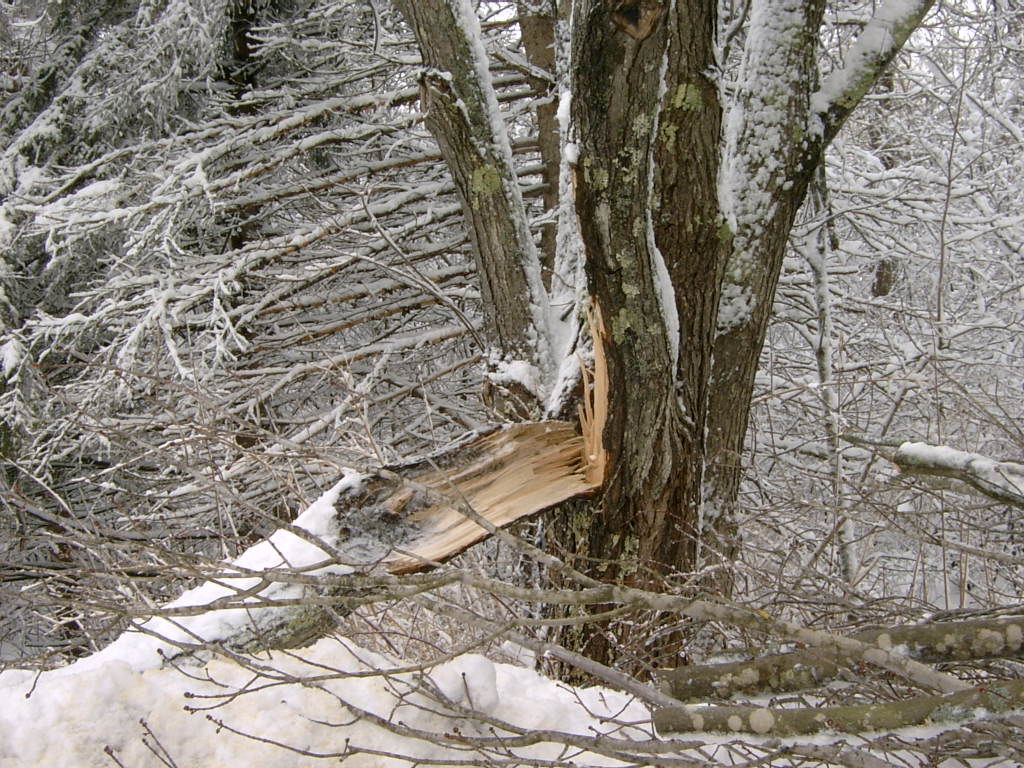Hazardous trees and branches can cause significant damage to gardens and landscapes. Damage from trees can be minimized in winter by thoroughly inspecting plants, and addressing any hazards that are present. The following examines the benefits of performing tree and branch removals in winter.
Pruning Defective Branches
Winter is one of the most ideal periods for pruning trees. In winter, many trees shed their leaves or needles, making it easier to identify branch defects. Trees with decayed sections of the trunk, or damaged limbs often succumb to heavy winds and inclement weather. Branches that are located close to a roof can allow snow or rain to leak into the attic. This often promotes the formation of mold and mildew. Exposure to rain or snow may also result in extensive wood rot. Dead or diseased branches can incur breakages from snow or ice loading. If situated near a power line, or another utility, falling branches can strip live wires, and create electrical fires.
Damaged branches, and dead sections of the tree should be carefully removed. This will improve tree vigor, and encourage the development of healthy branches. Proper pruning will also prevent trees from becoming overgrown. Branches must be periodically separated in order to promote sun exposure, and improve air circulation throughout the tree’s crown.
Limit Disease Transmission
Many disease pathogens are inactive during winter. When a tree or branch has been infected, and must be removed, the cold climate will reduce or eliminate the potential for other trees to become infected. Removing an infected tree in winter will also prevent outbreaks from occurring during the growing season.
Deter Insect Infestations
Many insects become dormant in winter. As such, infested trees may be removed during this period without disturbing the insects. Culling infested trees in winter will help to prevent outbreaks during the growing season, salvaging nearby trees. If a removal is performed when the insects are active, it often encourages them to migrate to other trees, creating additional infestations.
Maintaining a Clean Landscape
In winter, when a tree or branch removal is conducted, the lack of foliage on many plants reduces the amount of leaf or needle litter created during the extraction. The frigid climate also renders the ground frozen, enabling it to better withstand the weight of heavy equipment.
Correcting Winter Storm Damage
Trees may incur significant damage from snow or ice storms. Extensive damage to the crown can necessitate the tree’s removal. Cracks, and other structural defects should be promptly corrected. When neglected, a tree can become stressed, and decline. Trees that are structurally weakened are more prone to collapsing during snow or ice storms.


